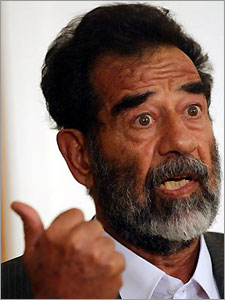The Therapy Sessions
Tuesday, November 09, 2004
Polls and elections
One problem in this election was the polling.
The voters confounded pollsters, who tried differentiate between "likely voters" and those who'd rather stay home.
In addition, other factors intruded: the number of unreachable households without land-line phones (probably young and somewhat more Democratic), and the number of households with Caller-ID (likely Republicans).
How can they make sure they have an accurate sample? The pollsters are understandably worried that their occupation may be in jeopardy if these groups grow futher.
There was - supposedly - quite a bit a volatility in the polls.
Not really.
I tended to go by the RealClear Politics poll average, which showed Bush with a clear 1-3 point lead in the weeks prior to the election. The media used whichever poll made Kerry look best (Zogby one week, CNN-USA Today the next, Gallup the next...). This was done in part to sell papers, but this was also an expression of liberal bias.
Strangely, one of the most accurate polls out there was the 7-Eleven Coffee Cup Poll:
7-Election cup counts tracked identically with published national election results of 51 percent for Bush and 48 percent for Kerry, and within a few percentage points of actual poll results in many states. Casting their “votes” in participating 7-Eleven stores across the country during the month-long promotion in October, customers served up these results:
I’M VOTING FOR BUSH cups – 51.08 percent
I’M VOTING FOR KERRY cups – 48.92 percent
Not bad, coffee drinkers. At first blush, this method of polling sounds ridiculous.
But you can't beat that result.
Where else can you get a sample size of millions of people? I mean, everyone (except me) drinks coffee. And 7-Eleven gets a wide variety of people.
I'll bet a similar poll of Starbucks coffee drinkers would be off the scales in Kerry's favor, though.


